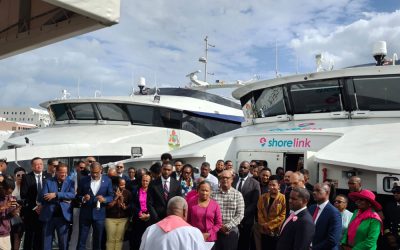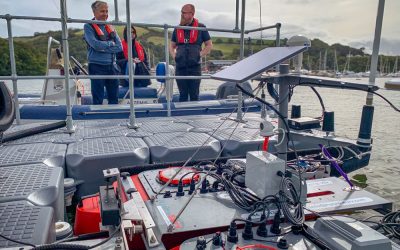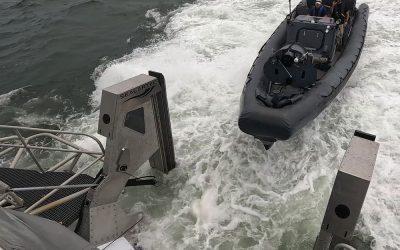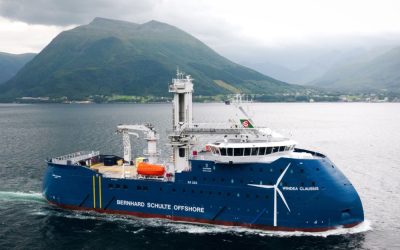Transitioning from traditional to alternative marine fuels introduces a new range of uncertainties – and not just for naval architects, shipbuilders and operators. Many mutual insurers are bracing for a future wave of complex alt-fuel-related claims and unprecedented liabilities, Mark Smith, loss prevention director for decarbonisation at global mutual NorthStandard, tells The Naval Architect.
Rather than waiting for this ‘wave’ to materialise, however, P&I clubs are being proactive and helping members prepare early. As Smith puts it: “It’s about keeping our eyes open and our ears to the ground to stay up to date with developments, so that we and our members are prepared for these new fuels.”
Smith emphasises the need to understand the implications of adopting each alt-fuel type, to educate its in-house personnel and members, who currently account for approximately 20% of all tonnage insured by the International Group of P&I Clubs – “totalling about 150 million gt”, he explains. For instance, nuclear small modular reactors haven’t escaped NorthStandard’s attention. “We need to understand nuclear-related risks,” says Smith. “A lot will depend on the type of reactor installed on board the ship and the emergency planning zone [EPZ], as well as the intended trade and operating model”. The EPZ is a reference to the immediate area around the reactor (typically, the vessel itself) where measures to manage a nuclear accident are in place.
“Modern reactors have a smaller EPZ,” Smith continues. “The larger the EPZ, the more of a problem operators will have finding an insurer to insure the nuclear risks and ports willing to accept the ship. It won’t be long until floating nuclear powerplants come to the forefront…it may be the case that they’re treated in a similar way to an FPSO, for example – but we don’t know that now. That’s why we need to prepare proper risk assessments, to stay on top of the evolving risks.”
At the other end of the alt-fuel scale, risk assessments are also necessary for wind-assisted propulsion systems (WAPS). Smith suggests considerations such as: “What if you can’t put down the sails when you’re entering or leaving port? What if the crew encounters mechanical problems? The WAPS may create manoeuvrability issues and require extra crew training, extra spares on board and additional maintenance.” As another alt-fuel example, Smith highlights hydrogen’s “big flammability risk and wide flammability range”, adding: “There are lots of unknown issues, developing all the time. This is why we need to work closely with the class societies, fuel experts, industry experts and technology manufacturers.
“When there’s a danger, there’s always a way to mitigate it – but there is also a risk that, four or five years down the line, the crew aboard the ship become complacent and critical maintenance or procedures are not followed – and that’s when incidents could happen.”
Despite the options available, one fuel type looks set to lead in commercial vessel adoption – and, consequently, in potential P&I claims. “We’re going to see a huge rise in biofuels,” says Smith. “These are essentially drop-in fuels, directly replacing fossil fuels – so, if you are running the ship on a modern slow-speed marine diesel engine, you don’t need to make any major modifications or conversions to use the biofuel. That lends itself well to older tonnage that is coming to the end of its lifecycle.”
Another factor driving biofuel adoption is the introduction, in January 2025, of the FuelEU Maritime regulation, and especially the surplus/deficit pooling option that can be generated using biofuels on vessels operating in Europe. Put simply, the regulation recognises that biofuels may be easier to access in certain areas (such as Amsterdam and Rotterdam, Smith says) than others (like Nordic and Mediterranean ports), depending on the available bunkering infrastructure, and its level of advancement, at each location.
Under the terms of FuelEU Maritime, each ship will report its fuel use annually, relevant to emissions and GHG intensity. Ships using biofuels (or other low-carbon fuels) accrue a ‘surplus’, while those using fossil fuels accrue a ‘deficit’ – so, ships with greater access to biofuels may pay less in FuelEU costs than ships without.
Now, though, by entering a collaborative pool – comprising, for example, Ship A, operating in surplus, and Ship B, operating in deficit – the respective owners can work together to trade surplus and deficit. “The pooling system only applies to the EU at the moment, but a similar system is up for adoption at the IMO, subject to adjournment for at least one year following the MEPC 2nd extraordinary session in October 2025,” Smith adds. NorthStandard offers its members a discount to access a surplus/deficit trading platform called BetterSea; the discount could equate to a saving of “around €42,000 per containership, or more for a cruise ship”, plus free expert consultation, Smith says.
“We anticipate some problems with biofuels,” Smith continues. “Perhaps not so much with the big mainstream suppliers and ports around the world, but somebody will always be looking to make money somewhere in the supply chain, which becomes a problem if they take cheap, poor-quality fuel, mix additives into it and sell it for a profit with no concern for the consequences. That is very hard to control without, say, fingerprint analysis and blockchain technology to provide full visibility.”
For the full, in-depth article, don’t miss the November/December 2025 issue of The Naval Architect




